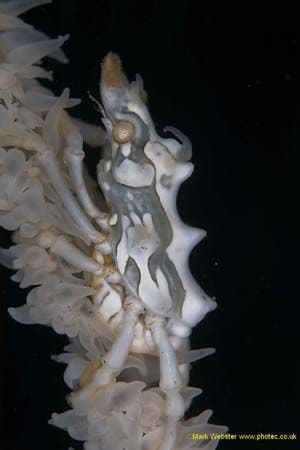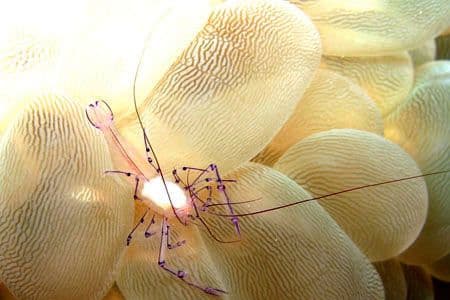Octopus mototi
Mototi octopus
Solitary species, found on our sandy bottom dive sites. It is a poisonous species. Usually found hidden in small crevices, but mostly in empty bottles and cans. Can resemble the coconut octopus by shape but its coloration is different. Mototi's colour patterns include a pair of bright blue rings (ocelli) behind its head and a general orange colour when resting. Distinct brown and white stripes appear on its body when swimming. This species can have a similar body size to the blue ring octopus as a juvenile, but can grow to larger sizes as an adult up to 10 cm. It can be recognized by its two tiny blue rings on the side of the body. This octopus is also poisonous. If they feel disturbed they can change color to vertical dark brown lines and the base body color can be change to yellow or white. They are usually found in the rubble and sea grass beds. They like to hide in shells, bottles, or even cans that make them feel safe. This species is also rare to find.

DIVE SITES
Types of Habitats
Please note that the variety of critters depends on the season and changes dive sites to dive site

Sand & Rubble
Lembeh’s iconic muck sites feature gentle slopes of volcanic sand scattered with debris, sponges, algae, and rubble.

Coral
Many soft and hard coral species live and thrive here, in the nutrient-rich waters of the Lembeh Strait.

Mixed
With a combination of reef and muck dives, you can enjoy a world of diving experiences in one location.



